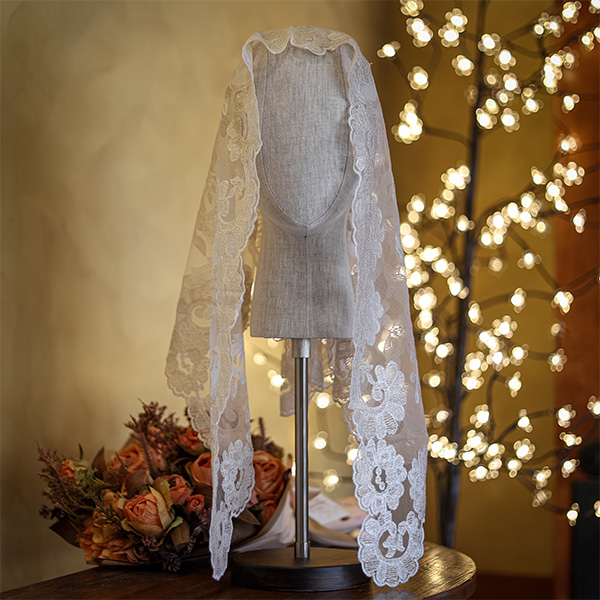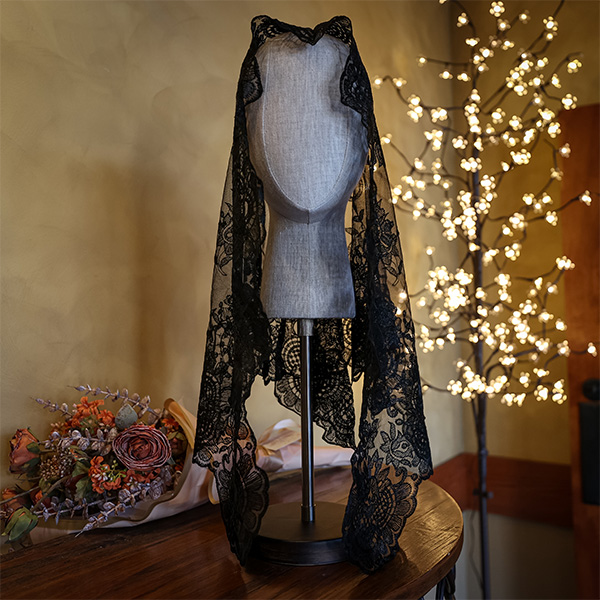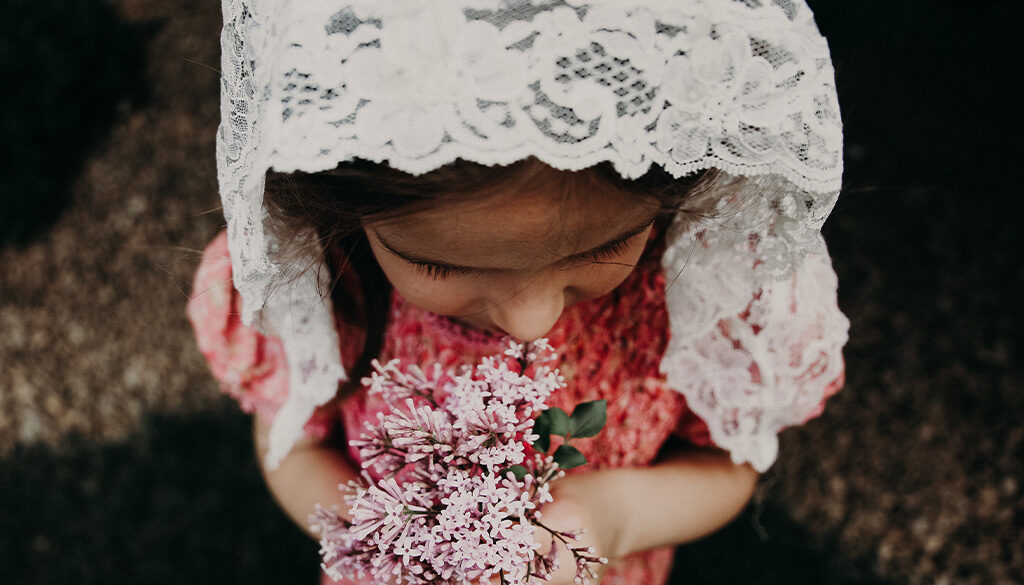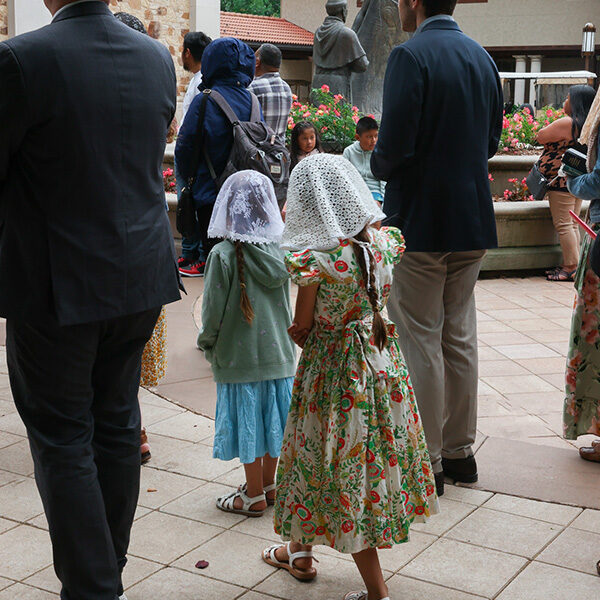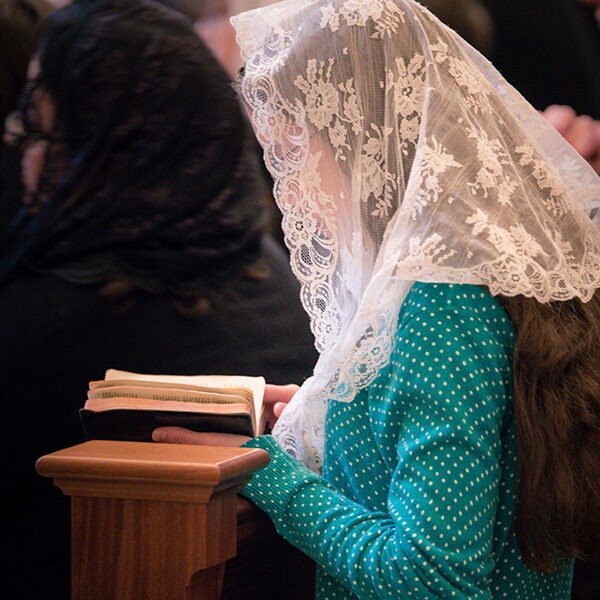Why Some Women Choose to Veil
Chapel veils, or mantillas, frequently seen in Mass at the Shrine of Our Lady of Guadalupe, have lately been making a comeback. These veils are a purely optional devotion; a woman is not more proper or pious for wearing one, and many women do not find that veils contribute anything to their prayer life. So why might some women find a veil helpful?
Modern Confusions
At first glance, Church teaching sheds little light. The most direct commentary, from 1 Corinthians 11, may raise more questions than it answers. This passage’s comments about men and women, adding to the veil’s history as a sign of submission, have sometimes led to confusion, or to veils being thought to show inferiority. A CDF document issued in 1976, Inter Insigniores, said of this passage that “these ordinances, probably inspired by the customs of the period, concern scarcely more than disciplinary practices of minor importance,” and “such requirements no longer have a normative value” (Inter Insigniores §4). Yet many still think of veils as connected with submission, raising questions about why a woman today would choose to wear one.
In our own time, discussion of purity has further confused the subject, leading to the idea that a woman covers herself so as not to show something indecent or be a source of temptation. Some such thought appears in Emma Cieslik’s Religion and Politics article on veils, which states about purity: “These church teachings … ask women to bear the brunt of sexual responsibility, and expect everyone, as author Linda Kay Klein writes, to maintain ‘absolute sexlessness before marriage.’ Klein argues that men are taught their minds are evil while women are taught their bodies are sources of temptation.” An explanation like this certainly would be degrading, as well as unfitting for those who believe in “the dignity of the human person … rooted in his creation in the image and likeness of God” (Catechism §1700).
In the genuine Christian tradition, however, a veil’s significance is profoundly positive and anything but shameful.
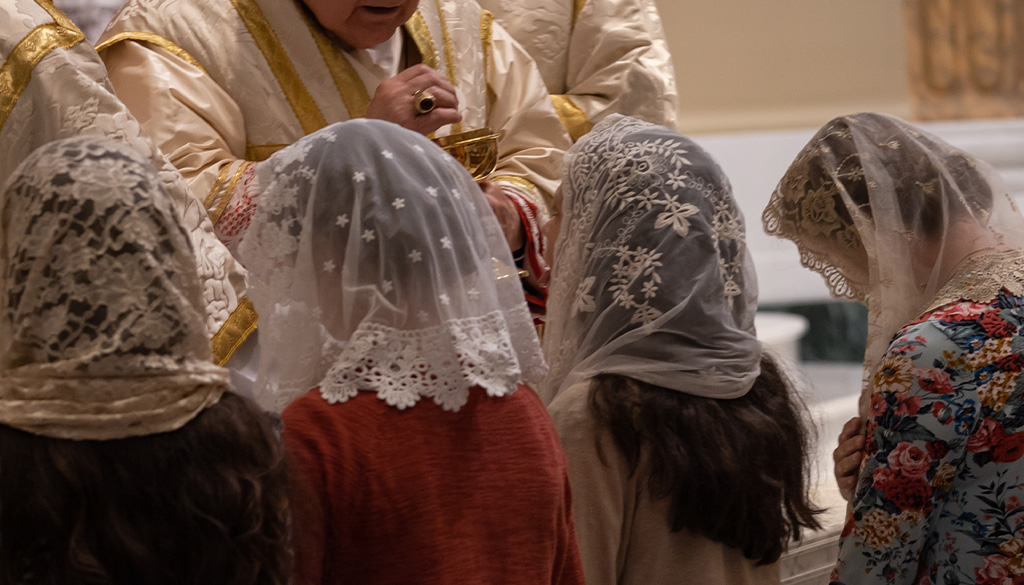
The Bride’s Veil
For one, “submission,” in this context, implies not some kind of slavery, but entrusting oneself in a relationship of love. One homilist recently explained this in terms of a bride’s veil: “It signifies her trust, her confidence in [her husband’s] Christ-like leadership. It signifies that she has chosen to follow him as a loving partner and companion. It also signifies that he has been specifically consecrated to handle that sacred vessel … and that’s something mysterious and beautiful.”
As the homilist goes on to explain, this bridal imagery is manifested in any Catholic woman: “Every Catholic woman, as a woman, is a living icon of the church. So when she veils herself here, in the presence of Our Lord, it’s a visible reminder for all of the spousal relationship—the bridal relationship—between the Church and Christ.” Notably, this truth applies whether the woman chooses to veil herself or not, as well as helping to show why she might choose to do so. A comment in an online discussion summarized the issue in words that apply both to a bride and groom and to a devout woman’s relationship with God: “It’s a sign of trust in him, not a sign that her free will is being taken away!”
Celebrating Differences
This imagery may help shed light on why veils are associated solely with women. Though men and women are called to the same virtues, their differences reveal different aspects of the soul’s relationship with God. “Though men and women are equal in dignity and value, they are different in other ways,” says another author in the above-referenced discussion. “The more I look at what the Church says about the differences, I view it as a celebration because the differences are emphasized as a necessity.”
The veil has an even more profoundly positive meaning as a sign of sacredness. The Shrine’s Executive Director Fr. Paul Check emphasizes this aspect, beginning again with the bridal veil: “That veil has a sense of promoting a kind of reverence and mystery, of modesty, of something that is sacred.” Clearly modesty, when correctly understood, has nothing to do with concealing something because it is evil, but rather of cherishing and revering something precious and holy. Again, the optional devotion of veiling is not necessary to practice this modesty; rather, it is one way to symbolize the sacredness of a woman’s person.
Veiling in Catholic Tradition
“The chalice is veiled before and after its use in the Consecration. Also veiled are the ciborium, which contains the consecrated hosts; frequently in front of a tabernacle there is a veil … And the Eucharist itself, we can say very carefully, also carries with it this idea of the veil, because the Body, Blood, Soul, and Divinity of Christ is hidden, veiled if you like, under the appearance of bread and wine. And all of these things, this positive sense of the purpose of the veil, goes back to the Incarnation, where Christ’s divinity is veiled under His humanity.”
-Father Paul Check

Why should the holy things be hidden under veils? Is it to place an obstacle between them and us? Fr. Check concludes otherwise, saying that Our Lord uses veils “so that we will approach the throne of grace with reverence and a sense of mystery.”
Regarded with Reverence
In this context, a veil is an ennobling symbol, indicating that a woman ought to be regarded with reverence and a sense of mystery. This meaning of veils is perhaps seen most clearly in Our Lady, the most exalted of creatures, who is almost always depicted wearing a veil.
The chapel veil, then, is among the many expressions of devotion that Mother Church’s wisdom and generosity offers her children. For those who have adopted it, it is a way to express and rejoice in an authentic Catholic understanding of women: as daughters of the Most High, infinitely beloved and endowed with unique gifts and dignity.
Flores Mariae Gift Shop
